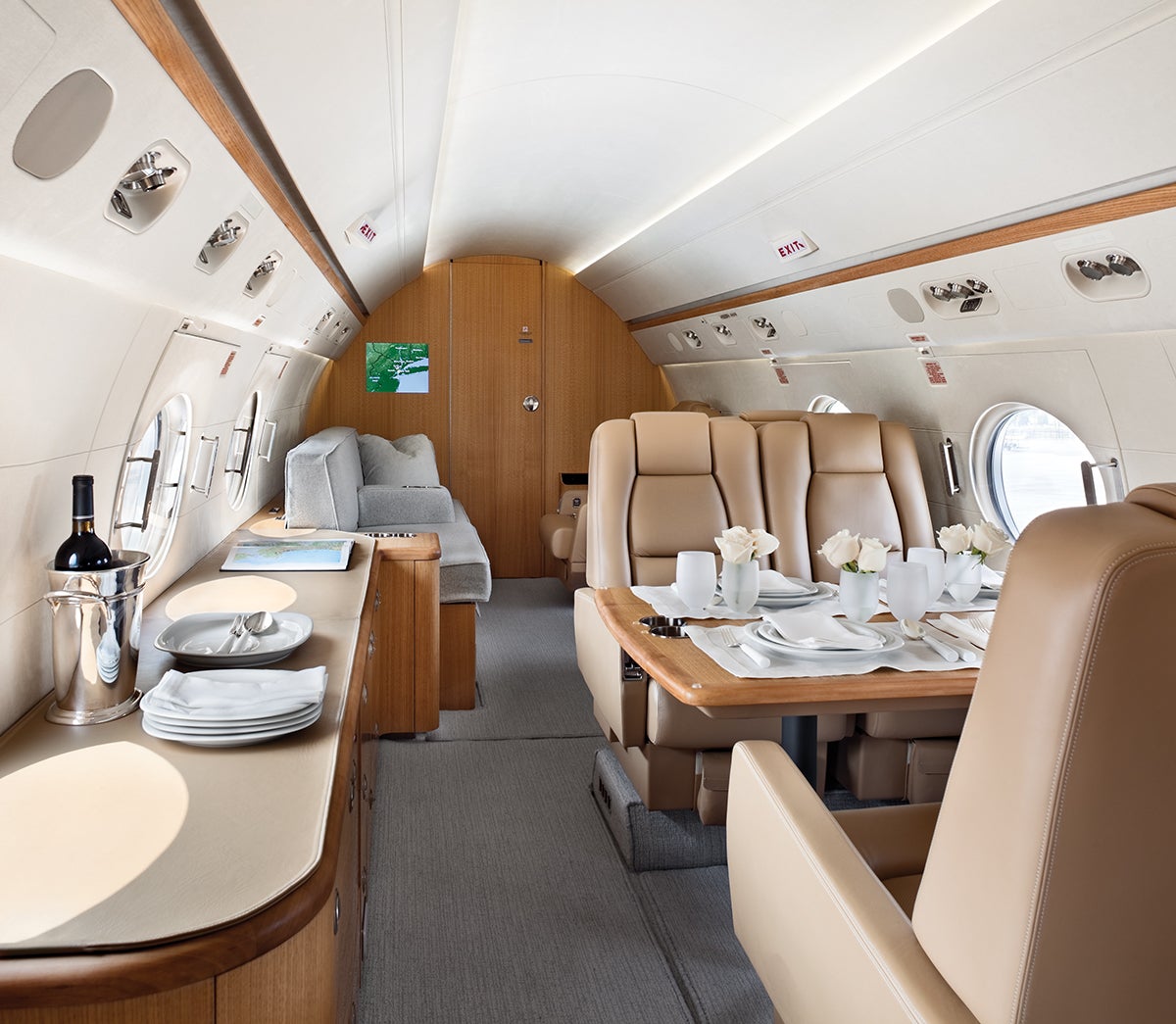Designers are exploring how to create passenger experiences that are more private and personalized, from legroom-enhancing seat recliners to bespoke baby bassinets. Plus, here’s what to know when your high-flying clients ask you to design their private jets.
Whether you’re an aerophile or a reluctant flyer, there’s no denying that the in-flight experience is unlike any other. On what other occasion are you confined to such a small space, sometimes for days at a time, surrounded by miles of emptiness? Aviation is unique for everyone involved—from engineers and designers to pilots and passengers—and as such, presents one-of-a-kind design challenges and opportunities.
“Our customers are focused on interiors that function best for how they use the aircraft,” says Shannon Watson, lead designer at StandardAero, a Scottsdale, Arizona–based firm that provides a range of business aviation services, including custom interior design for private jets. “For our clients, the plane is often an extension of their office or home.” Consider what you do in those spaces: Send emails, take calls, eat, watch movies, read, sleep. For a private jet or passenger plane to accommodate all these activities elegantly, every inch must be utilized—and every piece of plastic, nylon or metal must be weighed, literally, against the economic and ecological cost of bringing it on board. With such practical concerns in mind—not to mention the matter of safety—it’s easy to see why aesthetics haven’t always been the top priority in aircraft interiors.

BOH subscribers and BOH Insiders.










































